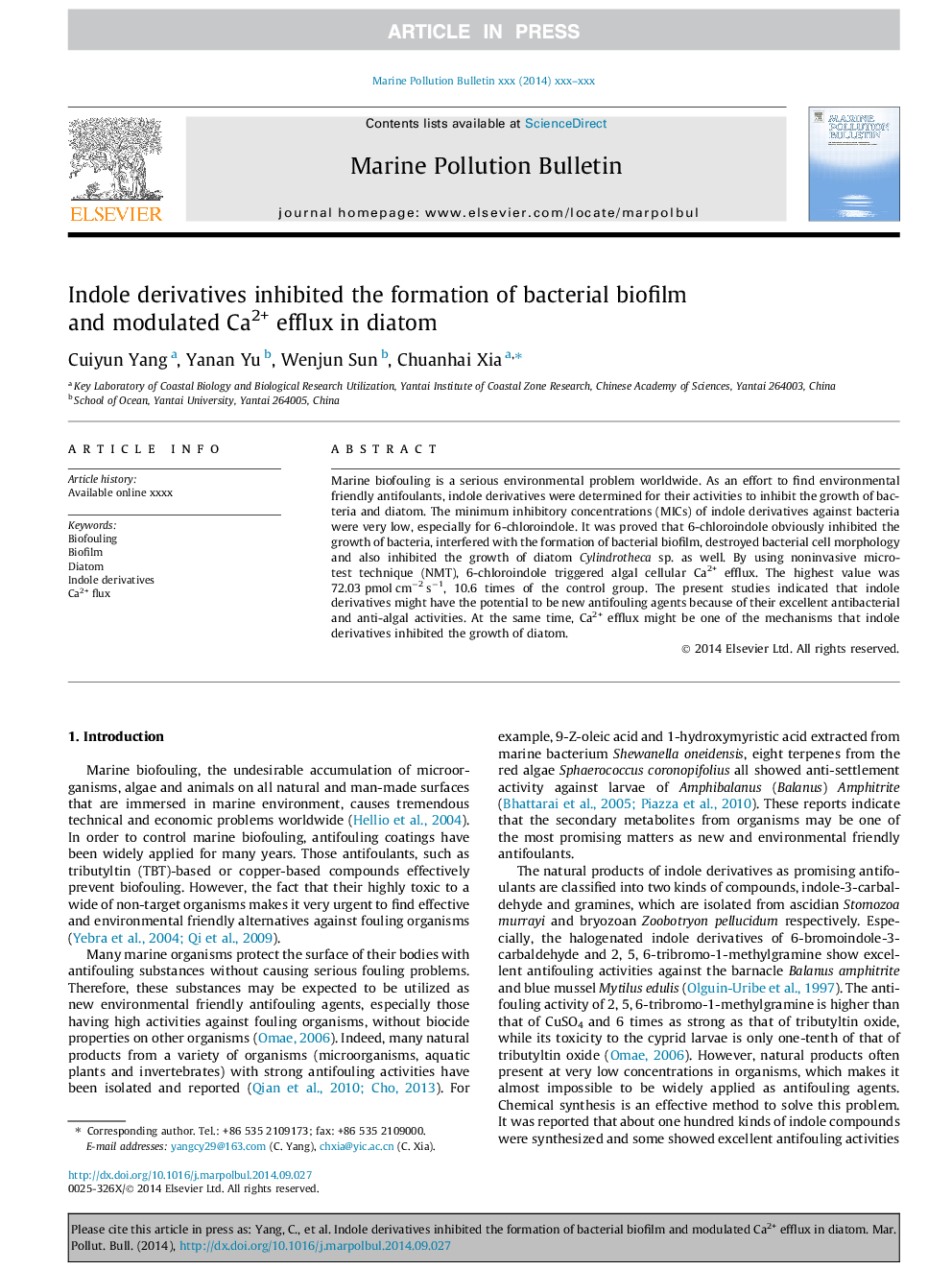| Article ID | Journal | Published Year | Pages | File Type |
|---|---|---|---|---|
| 6358247 | Marine Pollution Bulletin | 2014 | 8 Pages |
Abstract
Marine biofouling is a serious environmental problem worldwide. As an effort to find environmental friendly antifoulants, indole derivatives were determined for their activities to inhibit the growth of bacteria and diatom. The minimum inhibitory concentrations (MICs) of indole derivatives against bacteria were very low, especially for 6-chloroindole. It was proved that 6-chloroindole obviously inhibited the growth of bacteria, interfered with the formation of bacterial biofilm, destroyed bacterial cell morphology and also inhibited the growth of diatom Cylindrotheca sp. as well. By using noninvasive micro-test technique (NMT), 6-chloroindole triggered algal cellular Ca2+ efflux. The highest value was 72.03 pmol cmâ2 sâ1, 10.6 times of the control group. The present studies indicated that indole derivatives might have the potential to be new antifouling agents because of their excellent antibacterial and anti-algal activities. At the same time, Ca2+ efflux might be one of the mechanisms that indole derivatives inhibited the growth of diatom.
Related Topics
Physical Sciences and Engineering
Earth and Planetary Sciences
Oceanography
Authors
Cuiyun Yang, Yanan Yu, Wenjun Sun, Chuanhai Xia,
